Here are a selection of stunning landscape paintings from Anne Diggory’s solo exhibition Turbulence, currently on display at the Blue Mountain Gallery in New York (January 3rd – 28th). Not only do we get the paintings, but for Numéro Cinq Anne added reference photos and images of early versions of work and works-in-progress, delivering an amazingly revealing glimpse into the artist’s process and the provenance of these lovely paintings.
Anne Diggory has a BA in Studio Art from Yale and an MFA from the University of Indiana. We have been friends for years in the Saratoga Springs, NY, demimonde. She has been featured in Adirondack Life, American Artist Magazine, and The NY Times. She is known for her combination of accurate detail with expressive painting and strong abstract structure – an outgrowth of education at Yale and Indiana University and many years of exploring and painting the natural world. Her painting locations include the Adirondacks, the Hudson River Valley , Alaska and Arizona. A current series based on Lake George vistas was inspired by her research on John Frederick Kensett for an article that will shortly be submitted to the Metropolitan Museum Journal.
Diggory shows regularly at the Blue Mountain Gallery in New York City. She recently had solo exhibitions at Fairleigh Dickenson University and Suffolk County Community College, Selden, NY. Those two shows focused on her hybird works that combine photography and painting in a multi-layered process.
Her work is included in many public and private collections including the Hyde Collection in Glens Falls, NY, the Yale Art Gallery, and DePauw University. Recent commissions include several large murals for the Adirondack Trust Company in Saratoga Springs (one is a 22 foot high mural of a waterfall), a collaborative commission of art work for the Saratoga Springs Train Station and a large interactive public artwork for the Albany Institute of History and Art.
Here is the text of the Blue Mountain Gallery press release for the show:
Shifting surfaces of waters and skies inspired the artworks for Anne Diggory’s solo exhibition, Turbulence, at the Blue Mountain Gallery in New York City that runs January 3rd – 28th,, 2012. The exhibition includes motifs from the Adirondacks, the shores of Long Island and South Carolina as well as scattered tabletop arrangements. Diggory’s preference for images featuring dynamic instability extends to her choice of medium in many works that combine sections of photography and painting in a multi-layered process. Further disruptions, slightly tempered by stable horizons, occur with deep spaces, off-kilter compositions and irregular perimeters that energize the work.
The artwork in the exhibition is mainly from the past year and a half. The title “Turbulence” is both a reference to the imagery and a reference to the process of making art, which involves disturbing the surface of the canvas or paper.
dg
Turbulence
Paintings by Anne Diggory
The Water Improvisation Series
While all representational painting is of necessity an invention in order to create illusion out of paint on a flat surface, some of these images are more fictional than others. Some started as plein air paintings that selectively used elements within a motif and were then finished in the studio. The larger works and those with photographs inserted were started in the studio based on smaller works or photographs I had taken. The Water Improvisation series began with water-like patterns of paint and were developed from a well-informed imagination.
Cross Currents
Anne Painting
The three seacoast images seen here were inspired by dramatic skies set off by the shapes and colors of the land and water. I chose angles that were looking down the shore to increase the drama. Both Cross-currents and Golden Shore were begun in 2010 while standing in the shallow waters of Kiawah Beach in South Carolina, mesmerized by the swirling patterns at my feet as the foam and reflections interacted with the linear waves that pulled across the surface. In Cross Currents, a dawn painting, I started with a reaction to the angular, off kilter cloud formations that were echoed in the diagonals of the ripples of water. I worked on site for several mornings and then continued to tweak the colors and shapes intermittently over many months – enlivening the foreground and increasing the sense of space. The title refers to several aspects of the painting – the actual crisscrossing wave patterns, the visually interacting sky and water angles and the intersecting goals of creating dynamic surface shapes and suggesting great depth of space.
Golden Shore 8 x 10” acrylic on wood
Golden Shore was painted later in the week at sunset as I continued to play with the receding lines of the shore, this time with a dramatically empty and colorful sky. The initial phase of the painting was very quick, to capture the yellow light amidst the blues and grays and to lay out the odd tension of waves not parallel to the shore.
A reference photo.
Offshore Wind 11.75 x 17” hybrid media on paper 2011
Offshore Wind was inspired by an experience of a windy sunset on Clam Point near Sag Harbor on Long Island. I felt I had walked into a baroque painting as everything swirled around. I was able to do a small painting on site as I struggled with the strong wind. I later created this piece by combining an image of that painting with photographs I had taken and then painting and drawing on a print of the manipulated image. The shifting frames of reference and the dissolving and forming of the elements match the transitory experiences at the location.
Let there be white
Let there be white
A photograph from that same location appears as a backdrop in another artwork, Let there be white. I had begun a painting (still unfinished and pictured below) of a cluttered countertop that juxtaposed a deflated white bag with a dark eggplant and a mixed white/dark plaid in between. I had recently given a talk on images from Genesis and decided to introduce the image of God dividing night and day as a somewhat humorous commentary on the role of an artist dividing light from dark. When challenged in 2009 to create a work for a “White” show at Blue Mountain Gallery, I used a photograph of an early stage of the painting and inserted a manipulated version of the Clam Point sky. I then painted on the printed version of the collage. I shifted the light source to be coming from the sky into the still life and kept some of the disruptions of the insertions while smoothing others. These invented scenes allow me to present separate visual experiences that are together in my mind.
Early unfinished painted version of the still life portion 24 x 36” acrylic on wood
Change of Course Series
Flood (Change of Course Series)
In August (2011) I revisited the stream that had been the source of many paintings inspired by a broad expanse of Northwest Bay Brook, north of Bolton Landing, NY, often in sunlight and appearing relatively benign, even in winter. I knew it would be flooded from the many rains that plagued upstate New York, and I wanted to find a way to address the more violent aspect of water. It is difficult to take on a subject that is more in the news than in my own life, so I decided to just focus on expressing the sense of a flood that overwhelmed the shore, leaving nowhere to stand. I had read stories about the noise from the rolling boulders during the flooding, so I manipulated the shapes and paint to suggest that even the large boulder at the bottom was being forced out of the picture. I had thought it would be a much darker painting, both literally and metaphorically, but as I worked on it, I kept getting mesmerized by the raw beauty of the crashing waters that filled up the painting. And I realized that if I darkened both shores, the collision point between water and vertical cliff would be less dominant.
Cliffs
Ripple Effect II 50 x70″ acrylic on canvas
On a 2010 canoe trip on Lake George I paddled next to Rogers Rock and was overwhelmed by the verticality of the slides, with trees appearing in frozen waves clinging to the surface, emphasizing the geological structure that crisscrossed the cliff face. At the end of the day I paddled from across the lake toward the cliffs and experienced the cliffs as they appeared to be continually plunging into the crisp horizon at the same time that I was tossing on the waves in my little canoe. I took many photos of the complex waves and dramatic sky, knowing that I wanted to do a very large painting. Eventually I did a drawing from the photographs and then began on unstretched canvas since I didn’t know the proportions I would want.
Detail of canvas, blocking in the cliff forms
Below is an early stage of the painting, still unstretched. I had originally planned a dramatic sky that echoed the cliffs, but later decided to keep the strong shapes in mainly the water and the cliffs, and set up a visual contrast between the mass of the cliffs and the vaporous sky. Most likely I was channeling Cézanne for the cliffs and John Frederick Kensett and other 19th century painters for the sky.
Improvisations
Water Improvisation III 18 x 18” Acrylic on wood 2011
I created several paintings in the spring of 2011 for Improvisations, an exhibit in honor of Louis Armstrong. Along with the larger Stop-time works based on a real location, I created three improvisations in which I set up “solos” within the water patterns by placing relatively large areas of thick paint toward the bottom of a square that I then pulled across the surface, suggesting water. As with the larger works on this theme, it was difficult and exciting for me to abandon my usual “all-over” compositional approach for an image with a dominant section. For this one, Water Improvisation III, I had selected Matisse’s Jazz palette of black and blue to use over a lighter blue surface. At the back of my mind was an experience of studying the swirls of reflections while in my canoe on Lake George. So I set up a suggested corner of land from which the swirls were dancing into the open. I had intended to keep it fairly abstract (see below for first steps), but became intrigued with the challenge of keeping it focused on the wonderful swirls while still suggesting an actual location (although invented, it resembles Lake George). It was liberating to work in an artificial palette and think more about the painting than the location.
Work in progress for Water Improvisation III
—Paintings and Text by Anne Diggory
—————————————————————————————————————–
Anne Diggory – Artist statement
I keep making art because it’s the way that I engage with the world around me, using my sensitivity to visual detail along with my physical, intellectual and emotional energy. I enjoy the handling of materials and the creation of forms that emerge and dissolve on the flat surface. I enjoy the process – with its inherent anxieties — of making those visual elements serve a larger idea or impulse.
Much of my current work is inspired by locations that include moving water, dramatic landforms, changing skies and shifting light. I like to find shapes and relationships and then manipulate them to convey what I experience in those locations as well as the sometimes unsettling experience of struggling to understand the visual complexities. The finished works often have an all-over composition in which all parts are given equal attention and the viewer’s eyes are free to wander the surface. That structural preference grows out of my early influences — Cézanne, the Cubists and the Abstract Expressionists – as well as a personal preference for messy vitality. Recently I have been intrigued by more open, uncluttered spaces such as at the seashore or lakeshore.
My use of photography in hybrid artworks began unintentionally in 2006 when I was using Photoshop to try out several versions of a foreground in a painting that I had started out of doors. I placed a photograph of the lower part of the motif over a digital image of the painting and was amazed at the resonance created by the contrasting expressions of detail and the simultaneous expansion and contraction of the space. I manipulated the combined images on the computer, had the result printed and then continued to paint on the printed surface. Each new idea or location inspires a different approach to inserting photographic details. Sometimes they are seamlessly combined with the already painted forms. At other times, to emphasize shifts between ways of perceiving the space and expressing it, the edges of the fragments of photographic details stand out more starkly.
I continue to explore new subject matter through travelling, hiking, paddling or just looking around my studio for interesting juxtapositions of art with the constant clutter of living. The different ways of working — the hybrid pieces and the more traditional paintings and drawings — serve as inspiration for each other as I experiment with different perceptions and expressions of my visual world.
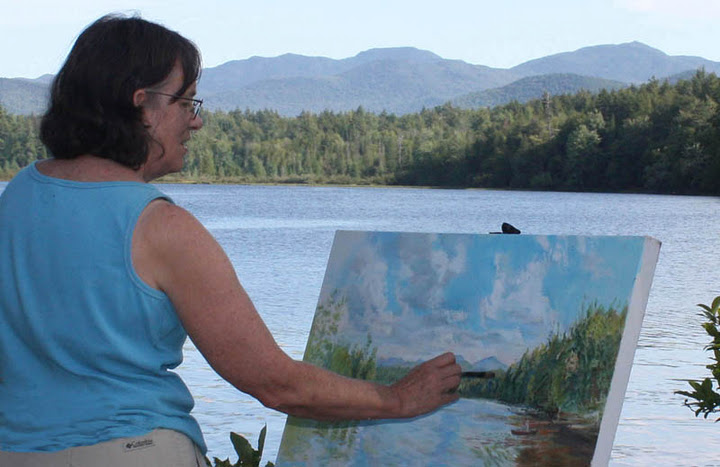
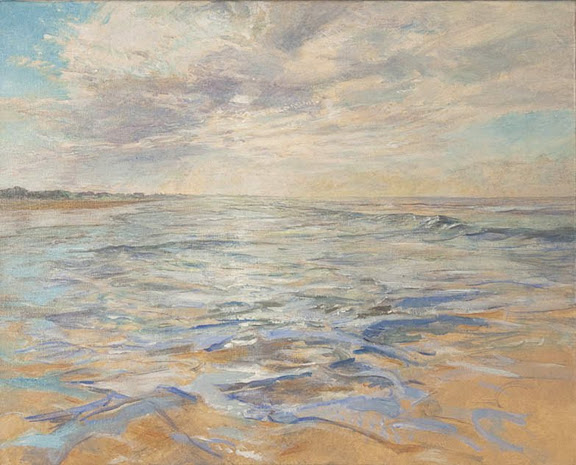
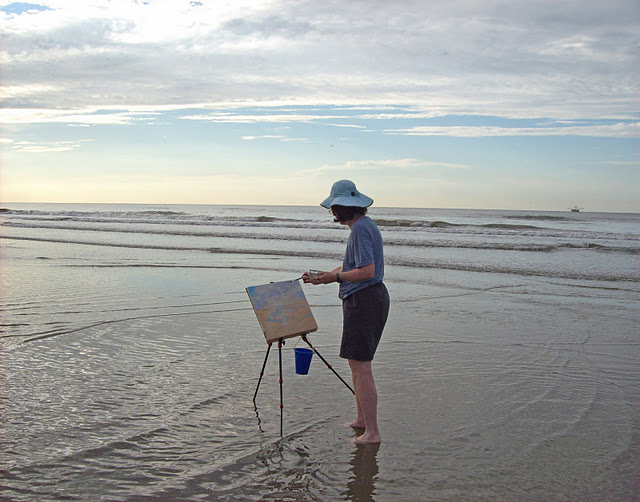
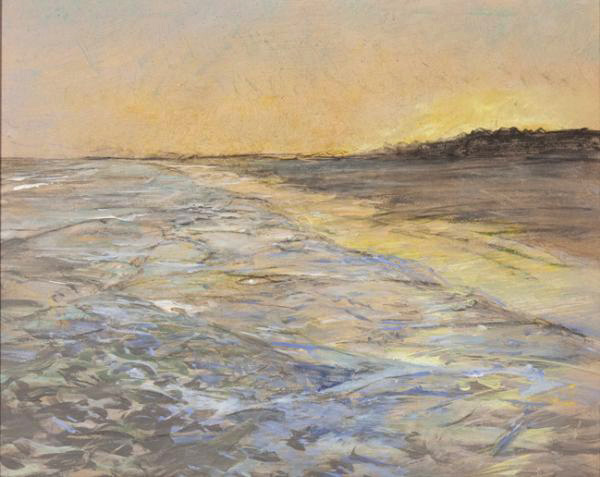
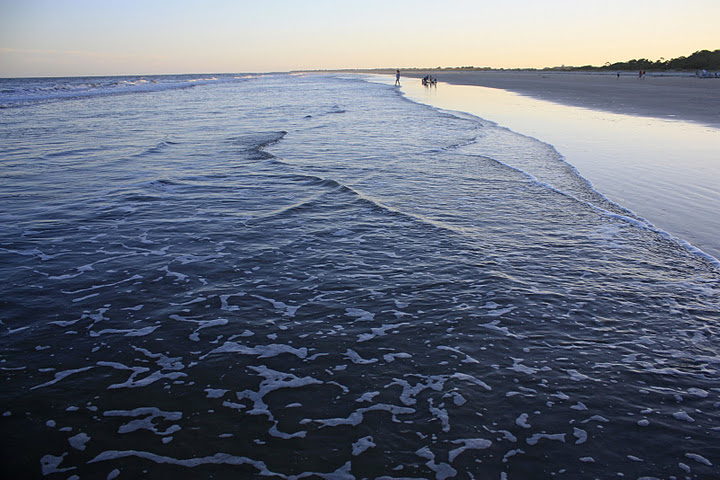
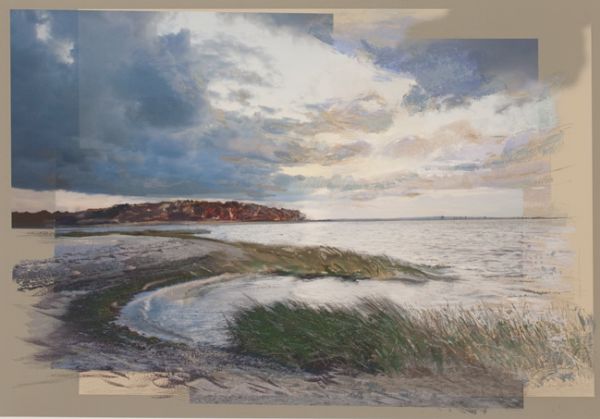
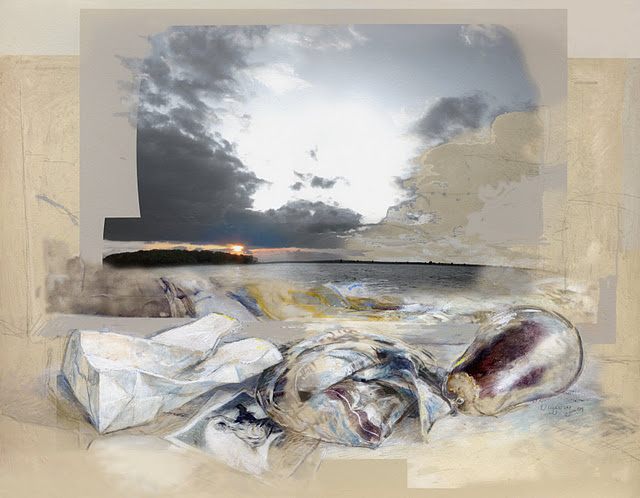
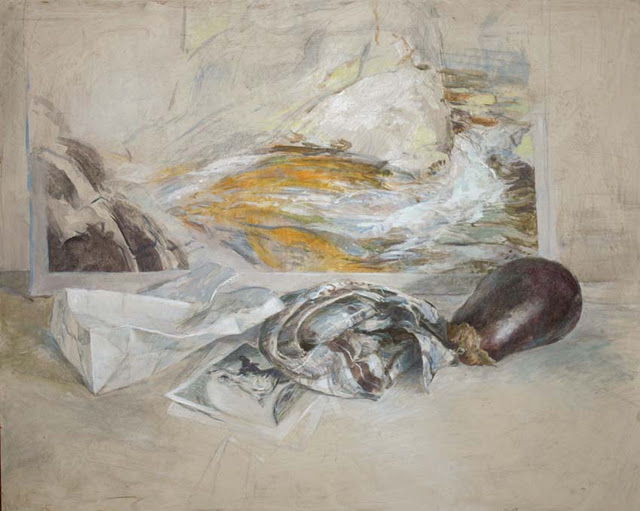
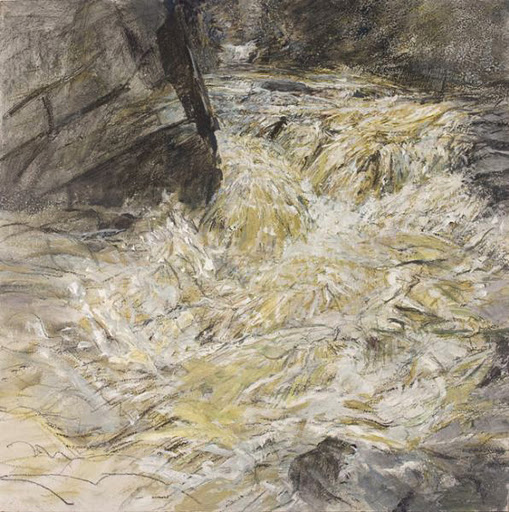
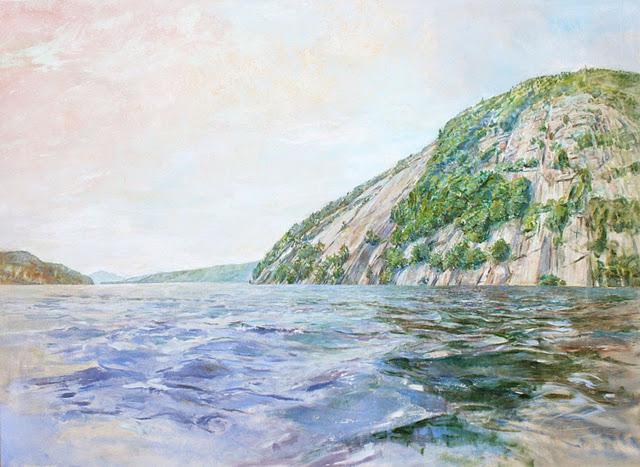

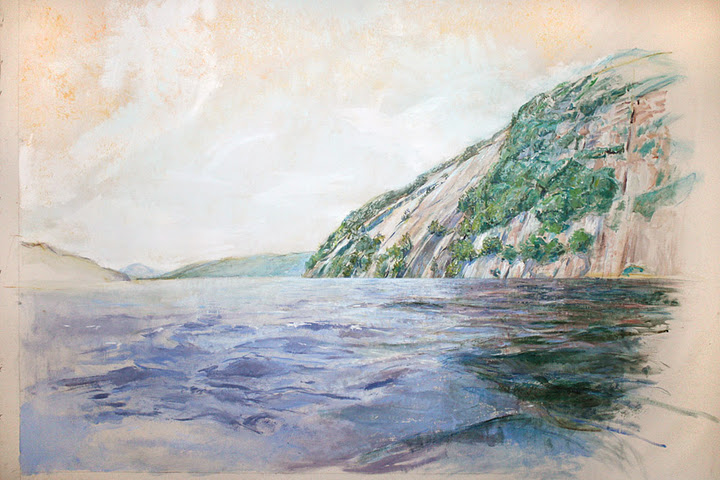


If only she could come out here to Wisconsin and paint the lake freezing behind the house. It freezes and thaws almost daily this year – there’s the thinnest sheen of ice, and then no ice at all, and then big clumps of ice clattering amid the open stretches, and then the thinnest sheen of ice breaking over every part again, and an eagle standing on it, and ducks not knowing where to go…These paintings are just what this lake needs – something to teach it what to do next.
simply beautiful work.
Thanks for these beautiful paintings, Anne, and for sharing part of your process in making them!
Thank you ns and Kim A for responding – communicating through internet magazines and blogs is new to me – but rewarding to see my work spread out further
Anne D
Refreshing imagery and discussion reconciling the figurative, the abstract, and the passionate vision that drives both to beauty. Thankyou Anne – and NumeroCinq!
Thank you for responding to my work and the discussion of the continuing challenge to create art out visual experience. It is always a balancing act and I like your labeling the three elements of the figurative, abstract and passionate. Upon looking up the Farmhouse Art School location I chuckled over yet another “Blue Mountain” reference – many of my paintings were done in the town of Blue Mountain Lake and the gallery is the Blue Mountain Gallery in New York (with no connection at all).
Inspirational and made me …… gasp…
thank you.
Inspirational ..the images and mixes are awesome astonishing …took my breath away